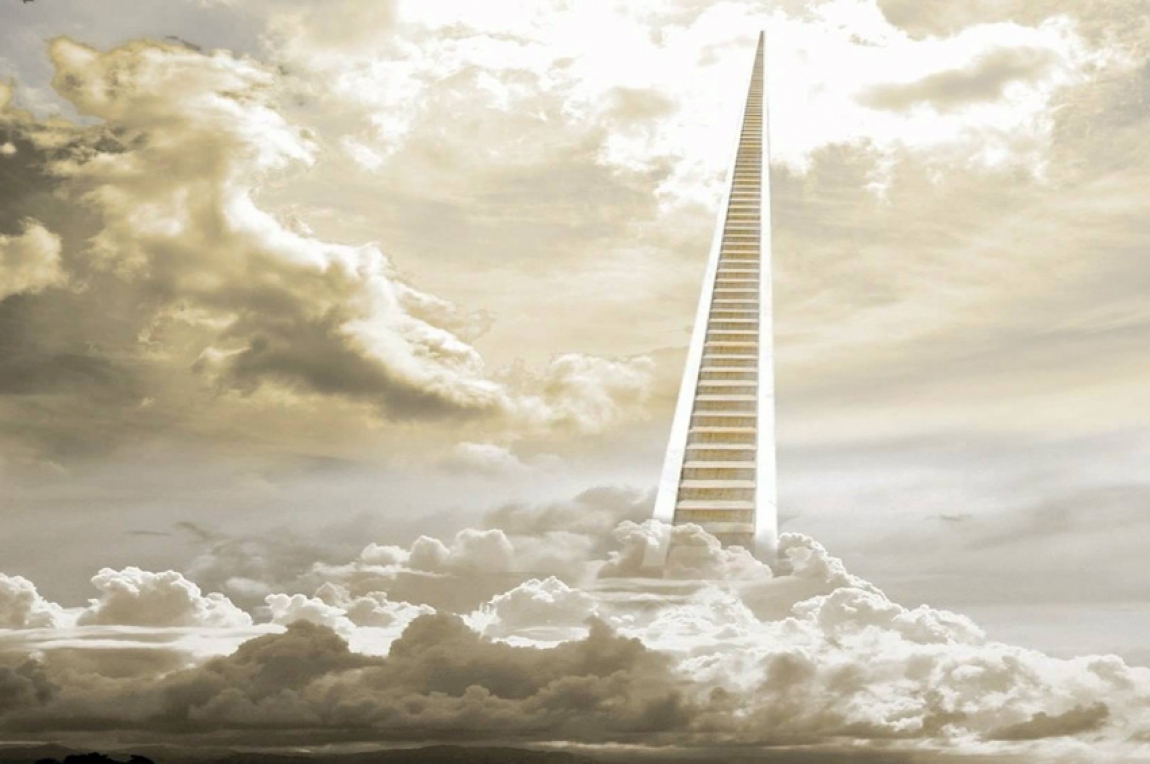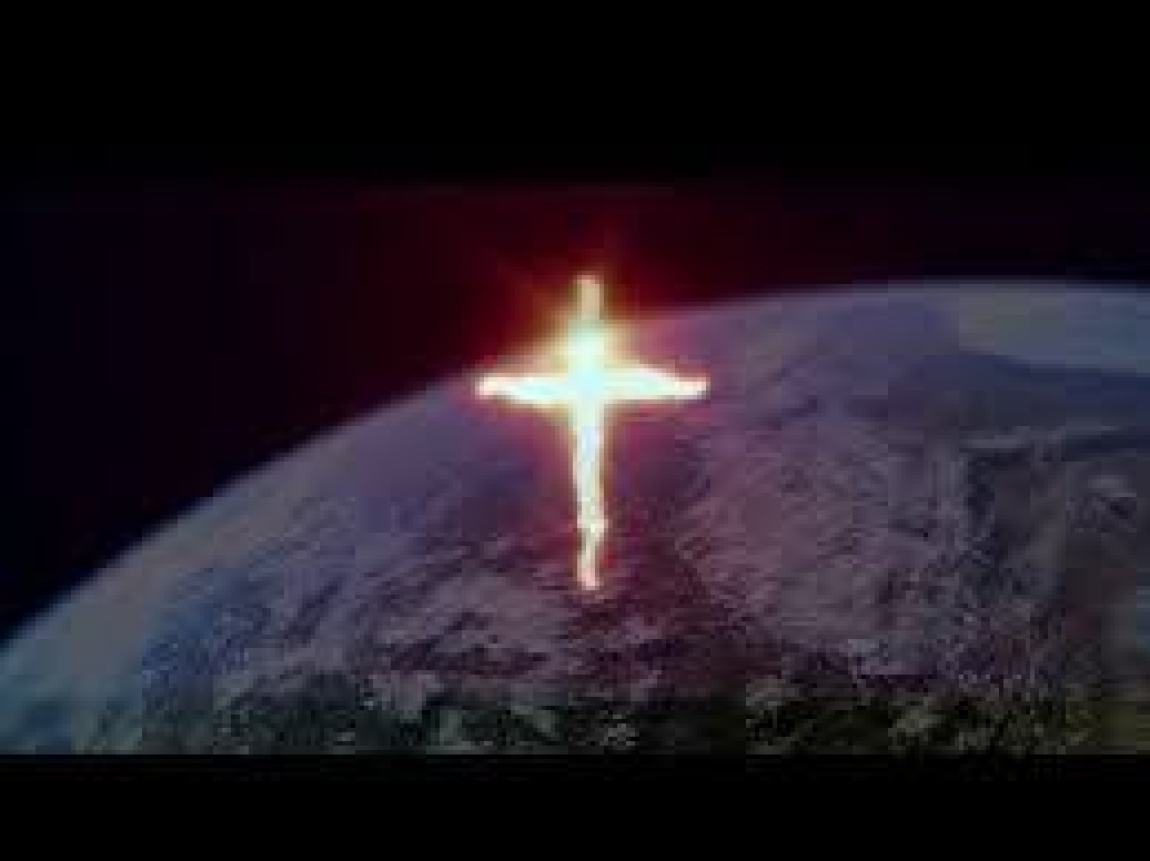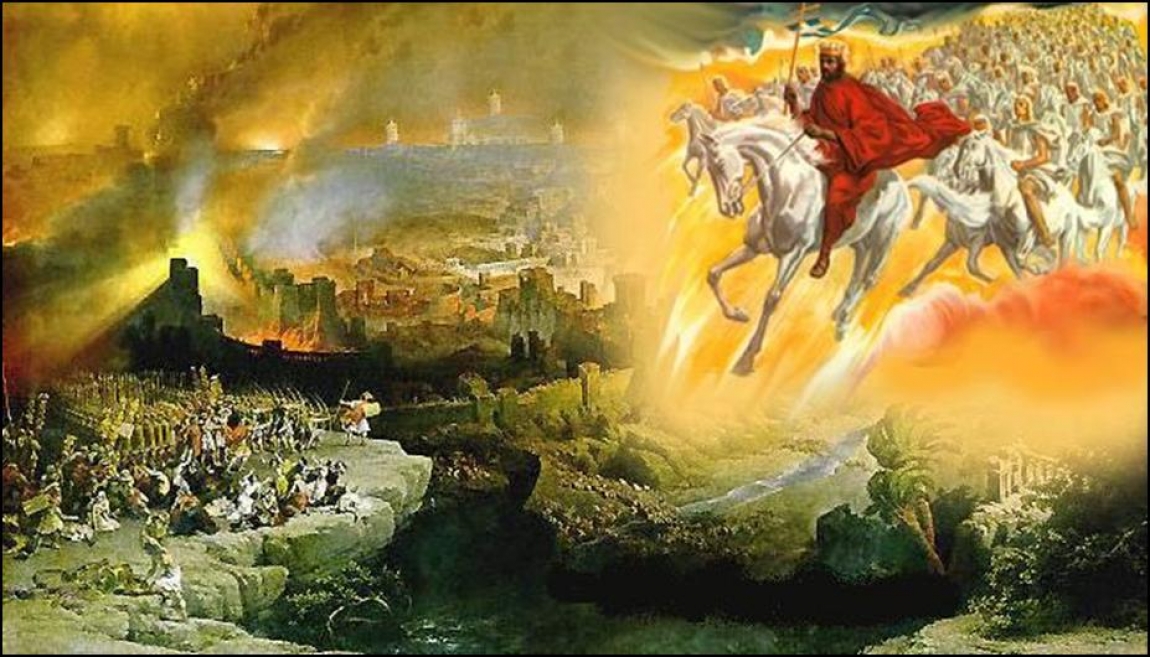Eschatology is the branch of Theology which deals with the last truths. In Greek: escaton = last, Logos = treatise.
Theology is the discipline which deals with God and the relationship between Him and man: it is a science because it expresses the contents of the Faith in a SYSTEMATIC FORM and applies METHODOLOGICAL PROCEDURES. It is different from the human or natural sciences, as its formal object, which is God, can’t be empirically shown.
But it is clear that Theology must concern itself with God and his capacity for God, and not of an isolated God.
Philosophy also tries to show the existence of God, but its base is different: in PHILOSOPHY IT IS REASON, while in Theology the sources are the SCRIPTURES, the Magisterium, and Tradition as well as the work of Theologians.
Urs Von Balthasar says, “Eschatology is the sign of the times of contemporary Theology”.
Eschatology is divided in two: Individual eschatology (Postmortem), which deals with the destiny which awaits me, particularly as a human being, and General eschatology (Anteposthistorical), which deals with the destiny which awaits humanity in its totality.
Eschatology presupposes a cosmo vision of linear time, not like existentialism or the old Greek or Hindu philosophy, in which time is cyclical, conceived of as an “eternal return”, from which they believe in reincarnation.
In the Christian idea there is an Alpha and an Omega.
The death of man is not a “peras” but a “teleos”, a goal, since we tend to a plenitude.
And a loving God who guides, a HISTORY OF SALVATION.
There is a kronos time, one with dates and hours, and a kairos time, of grace, of divine intervention.
PERSONAL ESCATHOLOGY:
DEATH AND RESURRECTION
History leads to the restoration of all things, of the cosmos and of our body.
It will be a perfect understanding of things divine with things material, the present divorce will not exist.
Temporariness: an incarnate spirit which reaches fulfilment with temporary acts; spirits have eternal decision making.
At what moment is one dead? Euthanasia. Stoppage of fluids (fluid, blood...) arrest of cardiac activity. Today: the cessation of neurological activity. Problem: one is close to suicide, 2) who decides?
The brain is the possibility of intellectual activity, like the light that passes through the window.
One begins to lose sight, taste, smell, tact. The spirit takes a while to inform the body. It depends on the type of death. It can remain because of some attachment.
Thanks to the spirit man possesses the resurrection.
Resurrection: Catechism of the Catholic Church No. 1016. At the resurrection, God will return incorruptible life to our transformed body, reuniting it with our soul.
The good news teaches us that we must hope for the resurrection not only as the mere glorification of our body but in the full form of communion and identification with the Christ of Easter.
In the Old Testament retribution was restricted to the temporal environment. The just man lives many years, whereas premature death is taken as a sign of a curse: Deut. 30, 15).
Ecclesiastes 1, 2 “vanity of vanities” everything in this life is effort because death brings all to an end, the foolish and the wise.
The souls of the just are in the hands of God: Wis. 3, 1
With the persecution of Antiochus Epiphanes the belief in the resurrection of the dead matures.
The book of Daniel invites the Jews to remain faithful to their religion, trusting that the just Judge will give everyone what he merits: “Many of those who sleep in the dust of the earth will awake” (Dn. 12, 2).
The second book of Maccabees, the history of the persecution of Antiochus. He wanted to Hellenise the Jews, violating the Mosaic Law and eating the flesh of pigs. A mother and her children remain firm in the Faith. The hope of recuperating them appears clear in chapter 7.
Christ is the first to resurrect. New Testament.
He argues with the Sadducees who denied the resurrection. They do not know the Scriptures: “I am the God of Abraham, Isaac and Jacob: Ex. 3, 6. the patriarchs don’t disappear, they are in the presence of God.
Mark 15 gives testimony of death-resurrection: burial, the centurion certifies his death, he is buried in a grave and the apostles find him alive.
Emmaus: “It was necessary” it is not a simple recovery of life, but a new way of existing.
Acts: The apostles are witnesses to the resurrection.
Romans establishes a relationship between Adam and Christ: sin enters through the first and life through the second.
“In Adam everyone dies, in Christ, all will receive life”. He is the FIRST.
In the fourth Gospel, Christ appears as the protagonist on the day of the resurrection: the hour comes when all who are in the grave will hear His voice, and those who have done good will come out for a resurrection to life and those who have committed sin for ignominy: Jn. 5, 28.
“I am the Resurrection and the life”: Jn. 11, 25.
“De resurrectione” by Athenagoras first apologetic defence “it is necessary that not only the soul receive the reward for the things it did but also the body”.
Characteristics of the resurrected body:
It’s subtle (To penetrate), pure (Upright), agile (Bilocation or rapid movement), luminous, a reflection of the Resurrection of Christ.
St. Augustine: “souls have a natural appetite to administer their body”.
It is fitting to live keeping death in mind, to participate in rituals, to constantly think that life will end, so as not to be afraid and to be always prepared.
It is participation in Easter.
The Antichrist “he will be wounded to death and he will rise up after three days” but it’s different from the resurrection.
Death is not the end of life, but the beginning of true life. Death is a step to a better place or state for those who die in God...much better than here. We should not think of death with fear, it is a step through that wall, to see and live something unimaginable.
St. Teresa of Jesus: “This earthly life is like spending a bad night in a bad inn”.
St. John Chrysostom, “Death is the journey to eternity”. In short, it’s the definitive encounter with God.
RETRIBUTION:
Does the immortal soul leave the body at death and go to heaven directly? Or does it sleep in the grave until the resurrection, without receiving any reward or punishment? Or does it go to “Hades” until it awaits judgement?
Private Judgement: it consists of a kind of instantaneous spiritual x-ray or “scan” that the soul receives through divine illumination, by means of which it knows exactly the place or state that will correspond to it for eternity, according to its good and bad works.
The New Cathecism of the Catholic Church says: “After death, every man receives in his immortal soul his eternal retribution in the private judgement, either by way of purification or by immediately entering into the beatitude of heaven or by immediately being condemned for ever” (#1022).
It knows the verdict of this judgement, but it remains suspended until the Parousia.
Retribution in the Old Testament: It is collective: God rewards or punishes the nation in relation to fidelity to their election. It’s also individual. But both rather in this life: wealth, long life, children, are a sign of reward for keeping the commandments.
In Daniel and in Maccabees 2 the resurrection starts to be beyond this earth.
The book of Daniel is the inspired book of the Old Testament which most explicitly talks of the differing fate that awaits the good and the impious after death (Dan 12, 1-3). In the last day of the world, many of the dead will resurrect: some, i.e. the Israelites faithful to the Law, will resurrect to eternal life; others, to eternal shame.
The second book of Maccabees also clearly affirms the resurrection of the dead (2 Mac. 7). Besides, it admits the possibility of satisfaction after death for faults committed and not yet expiated (12, 43-46). The resurrection of the just, according to Maccabees 2 will take place at the end of times; meanwhile, the just live in a transitory state awaiting the general resurrection.
New Testament
It was not the resurrection of Lazarus that gave confidence to the Church about its own future glorification, but the resurrection of Christ Himself in IMMORTALITY (Jesus simply said to Martha: “Your brother will rise again” (John 11, 23). St. Paul expressed himself thus regarding the resurrection of Christ: “If Christ did not rise from the dead, our Faith is in vain and we are still in our sins” (1 Cor. 15:17).
“Beloved, we are now the sons of God, and it has not yet appeared what we shall be. We know, that, when He shall appear, we shall be like to Him: because we shall see Him as He is. (1 Jn. 3:2).He, John, is practically ruling out the possibility of seeing the Lord Jesus as He is at the moment of our death. John says emphatically and plainly, that we shall see Him as He is when He appears in person, i.e. at His second coming.
“Behold I come quickly, and my reward is with me, to render to every man according to his works.” (Apoc. 22, 12).
Paul was clear when he said: “As to the rest, there is laid up for me a crown of justice, which the Lord the just judge will render to me IN THAT DAY (i.e. in the appearance of Jesus, according to verse 1); and not only to me, but to them also that love his coming” (2 Tim. 4:8).
Faithful Job believed in the resurrection of the body, and he was conscious that he would be raised from the dead in order to be able to see his Redeemer and God. At no time did he believe that after dying would he depart for heaven by way of his soul or spirit in order to see God. These are his declarations: “I know that my Redeemer lives and that He will at last stand forth upon the dust; and after my skin is gone, in my FLESH I will see God ; I will see Him for myself, and my eyes will see Him, and not another...” (Job. 19: 25-27).
To Daniel the prophet it was said: “And you will go to the end, and you will rest, and you will rise up to receive your inheritance at the end of days” (Daniel 12:13). It is clear then that the same faithful prophet Daniel would rest in his grave awaiting his bodily resurrection in order to receive his inheritance or reward. He says clearly “at the end of days” of this world, and not “at the end of his days”.
The spirit returns to God – not the soul! (An energetic element that gives life to the body). In Ecclesiastes we read that man dies (pious or impious) and that his spirit returns to God who gave it to him. The text says: “Who knows that the spirit of the sons of man goes up, and that the spirit of the animal goes down to the earth?...”and the dust returns to the earth, as it was, and the spirit returns to God who gave it (Ecclesiastes 3:21; 12:7). In such a way that the Bible teaches that it is the spirits of all men – and not their souls – that go up to God, who is the one that gave them.
.............
New Testament in comparison to Old Testament. Our Lord frequently unites the idea of retribution in this world with that of the end of times. Thus it happens, for example, in the beatitudes and in the curses, presented to us by Luke 6, 20-26. The same happens when Jesus promises the reward to the disciples that have followed Him and have renounced everything for love of Him: “they will receive a hundred fold now in this life..., and eternal life in the world to come” (Mk. 10, 29). Also when He assures His followers that they will find rest for their souls, and He promises to refresh all those who labour and are burdened (Mt. 11, 28 ss.); and when He speaks of the punishment of Jerusalem (Mt 23, 37 ss.; cfr. Lk. 19, 41-44).
But Christ also talks of eternal life and punishment which will be given to the good and bad at the last judgement (Mt 25, 46; cfr. Me 8, 35; 9, 43 ss.), and of the treasure the good will accumulate in heaven with their detachment from the riches of this world and with their good works (Mk 10, 21; Mt. 6, 19). They equally have an eschatological meaning the images of “to sit at the table in the Kingdom of God” (Lk. 13, 29), and those of “its better to go into heaven with one hand than to go to gehenna with both, to the unquenchable fire” (Mk. 9, 43.47), which is “prepared for the devil and his angels” (Mt. 25, 41).
Each one will receive retribution according to his works (Rom. 2, 6; 1 Cor. 5, 10; 2 Tim 2, 12; Apoc 20, 12). Besides, if we exclude the text of 1 Cor 11, 30 in which St. Paul appears to allude to a resurrection of God in this world, this resurrection is always for the day of the Parousia, in the final judgement (2 Cor. 5, 10; lam. 5, 9; 1 Pet. 1, 4 s ; 4, 13; 5, 14; Apoc 22, 12). And it is based on the works of each one (lo 5, 29) and on Faith in Christ (lo 12, 47-50; 2 Thes. 1, 7). The prize is described under the images of entry into the eternal Kingdom of the Lord (2 Pet. 1, 11), of glory, honour, peace, immortality and joy (Rom. 2, 6 s 10; 1 Pet 4, 13). The punishment, on the other hand, is like a death that lasts eternally (lo 5, 24; 8, 51; Rom 1, 32; 6, 21 ss; lam 1, 15; Apoc 2, 11), with the perdition and the ruin of man (Phil. 1, 28; 1 Thes. 5, 3; 1 Tim. 6, 9).
The mystery of the Assumption of the Blessed Virgin Mary into heaven reminds us of the sense of our life on earth and what awaits us after death. The fact that the Blessed Virgin was taken body and soul into heaven, which is a question of a Dogma of Faith for a Catholic, is a sure sign of hope.
Mary, who was undoubtedly adorned with exceptional graces by God the Father to serve as a natural mother for His son Jesus, is, in spite of all these special gifts- completely and totally human as are all men and women in this world.
The fact that Mary is completely and totally human, together with the fact that she is in heaven in body and soul in a glorious form, makes us reflect on the destiny God has prepared for everyone who lives in accordance with this truth that we learn beginning with the Catechism of our First Communion: we have been created to know, love and serve God in this life and later to fully enjoy His Presence in eternity..
JP 11: Catechesis on eschatology (11-8-99): “The Christian life...obliges us to keep our eyes fixed on the goal, on the ultimate realities and at the same time to commit ourselves to the “penultimate” realities...so that the Christian life may be a great pilgrimage to the house of the Father”.
WORLD GOVERNMENT (Ex cursus)
A number of men have had the dream of controlling the entire world:
Alexander the Great, King Arthur, Napoleon, Hitler and others.
The Bible, tells us that one man will manage to do so, the Antichrist, the last “king” before Jesus Christ, who will be the true King of humanity.
In the modern world there are groups. The best known, masonry, the old Brotherhood” of King Herod and some Jewish leaders.
Illuminist Masonry: 1776 Adam Weishaupt.
The Committee of 300. Beginning of the 20th Century. The queen of England, The queen of the Low Countries, the queen of Denmark and various European royal families belong to it.
The Council on Foreign Relations (CFR founded in 1919), The Trilateral Commission (founded in 1973), The Bilderberg Conference (formed in 1954), The Club of Rome 1968) and others like The Cato Institute, American Enterprise Institute (AEI) and The Project for a New American Century (PNAC).
The Council on Foreign Relations (CFR) is an institution of incalculable and extraordinary public influence, which is considered the fundamental centre and nucleus of greatest power in this world empire.
It has been the undoubted promoter of other institutions of world character like the Bilderberg Club, the Trilateral Commission and the Club of Rome. They are part of a power elite which controls, behind the scenes, the government of the United States. Its members are politicians, financiers, university professors, owners of the most influential mass media in America, and presidents of large companies, who use their influence to infiltrate the New World Order in American life.
There is evidence from Admiral Chester Ward, a member of the CFR for 10 years who later denounced the real goals of the institution: “Within the CFR there exists a much smaller group, but much more powerful, made up of international Wall Street bankers and their principal agents. They desire primarily that the world banking monopoly be withdrawn from any power and that it fall under the control of the world government. This nucleus of the CFR is directed by the Rockefeller brothers”. On another occasion he accused the CFR of being “a gang whose principal objective is to put an end to the national sovereignty and independence of the United States.”.
The Bilderberg Group
The needed other institutions subordinated to the CFR where they could integrate personalities from other countries, linked to this world project. This project has been taking shape by way of the creation of other international groups with a globalist vision, such as the Bilderberg group founded in 1954.
The principal purpose of the Bilderbergs, as well as the CFR, is the establishment of a world government. It is estimated that there exists close to 200 influential men from member nations of NATO that belong to the Bilderberg group.
The ultimate objective of the Bilderberg group is to control the entire world. Among its plans it hopes to establish:
+ A world government
+ A universal church
+ World depopulation
+ Atheistic socialism
The Trilateral Commission
A triangular organisation: North America – Europe –Japan. It was created in 1973. And once again the great promoter of the Trilateral Commission is David Rockefeller. Its most representative figure is Henry Kissinger.
The integration of the Trilateral Commission is much wider, since, differing from Bilderberg, a world wide system is admitted in which the USSR must be integrated into the New World Order. The suppression of national sovereignties which with a view to a new order of peace and progress must be transferred to supranational institutions directed by a scientific and financial world elite. Brzezinski, the ideologue, advocates the decline of ideologies and traditional religious beliefs, as only the elements administered by technology and electronics will be able to allow human beings to advance to wellbeing and progress, the two great pillars of the Technetronic Era.
The Club of Rome
The Club of Rome (COR) was formed in April 1968 at the request of Aurelio Peccei, a famous member of the Bilderberg Group, of the governing committee of the Fiat Company and of the administrative Council of Chase Manhattan Bank.
Aurelio Peccei: “One of the greatest obstacles to human progress is the concept of sovereignty of every nation” and this has been confirmed by one of the leaders of the Club of Rome, Alexander King, who said that “World society requires a single direction, a great captain that guides the earth towards its common destiny.”
The present international financial “system” is based on two great frauds: when a group of bankers stripped the Congress of The United States of the faculty of printing dollars and they gave it to the Federal Reserve, a private group of bankers (all Jews), and in August 1971, the unilateral decision to remove the gold backing for the dollar at the rate of $35 an ounce (Bretton Woods Agreement).
See the book “The secrets of the Federal Reserve”, by Eustace Mullins.
GENERAL ESCATHOLOGY:
Pre tribulation Rapture: Manuel Lacuna, a Chilean Jesuit priest. The Book: “The Coming of the Messiah in Glory and Majesty”, written in 1791, published with the pseudonym Ben Ezra in 1812.
In Protestantism, 19th Century, John Darby, which is called Dispensationalism.
In the U.S. William Miller, founder of contemporary millennialism.
St. Augustine, against the heretic Cerinthus, discredited millennialism; he spiritualised the Kingdom of Christ so much that he confused it with heaven.
Afterwards, towards the 13th and 14th centuries, a doctrine was elaborated that held that the hierarchical and sacramental Church is already the Kingdom, symbolically and juridically, and its real perfection is found in every man in the after life, in the Church triumphant; the last judgement was only the solemn sanctioning of the encounter already possessed by each soul.
The Doctrine of Lacunza:
Two aeons, the present and the future, after the Parousia, in this world, divided by the “Day of the Lord”. It signals the changing of the times, in which God, by His power and mercy will change the present times of sin and misfortune, for times of justice and happiness.
The promises of Isiah Chap. 65 speak not only of a moral goodness, but also of a physical and material one.
Nowadays, traditional eschatology denies the realisation of the Parousia, a kind of modern Gnosticism.
Summarising: Although He has definitely arrived already, Christ continues to always be He who must come, since the “last day” of the present time is the “day of the Lord”, in which a judgment will be carried out over aion outos (present world) to definitively open the way for the plenitude of aion mellon (future world).











